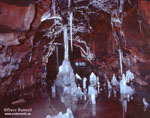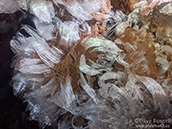
|
Ice can take on a variety of forms in caves similar to the most common of depostional formations, such as stalactites, stalagmites, flowstone, and curtains. These typically form from water flowing or dripping into the cave, and crystal faces aren't evident. More unusual forms such as harilike strands and hexagonal crystals may occur when ice freezes from water vapor, or flowers when it enters through seeps. Ice can form in many types of caves but most commonly in lava tubes or solutional alpine caves. In lava tubes they tend to form in lower levels of caves with a single entrance, allowing cold winter air to sink and be trapped. A number of the photos below are from lava tubes in northern California. Perhaps the most spectacular ice formations are those in alpine caves where the cave's ambient temperature stays at or below the freezing point year-round. One of the best known of these is the touristic Eisriesenwelt Cave in Austria, and many others exist in the high Alps. In the USA, few of these are known but perhaps the best-known is the undeveloped Fossil Mountain Ice Cave of Wyoming. In almost any cave in regions that reach below freezing temperatures in winter, ice formations may be seen in entrance zones regardless of the ambient temperature further in the cave. As warmer air outside air wafts through the cave, it may melt the ice into bizarre rounded shapes with bulbous tops known as schmos. The terminology for caves with perennial ice has been a bit confused. They have long been called sinply "ice caves" in English. Englishman Edwin Swift Bach suggested that these caves be named by their French name, Glacieres, in his seminal 1900 work Glacieres and Freezing Caverns. But even Edwin acknowledged that people were unlikely to adopt the French term, and "ice cave" continues to be the most popular term used for these caves by both the public and most geologists. Caves actually formed IN ice are commonly called Glacier Caves by glaciologists. |
![]()
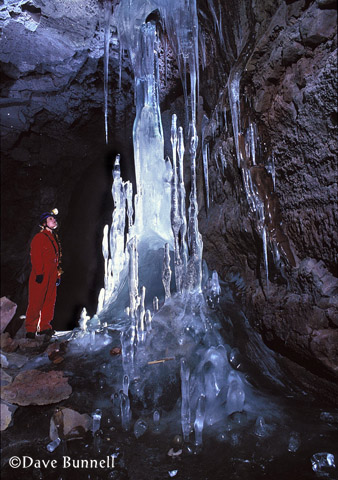 Broomstick ice stals in a lava tube |
 Massive ice deposits in a lava tube |
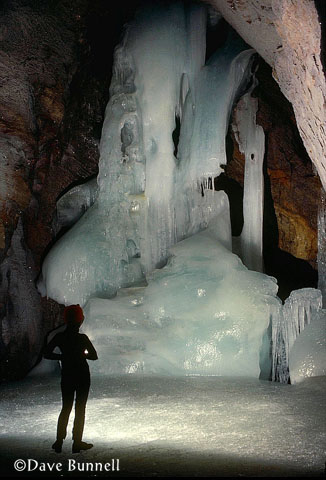 Permanent ice can take on a blue-green cast. |
Deflected ice stalactites and stalagmites in a lava tube |
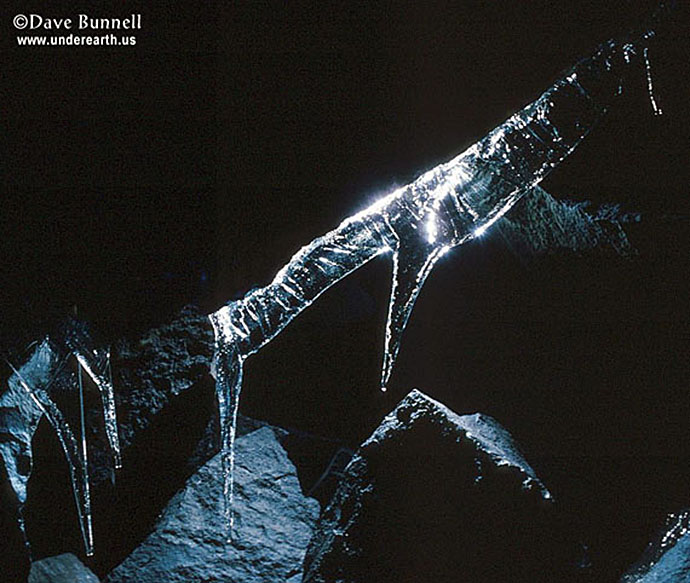
Where water flows along freezing ceilings, ice draperies can form.
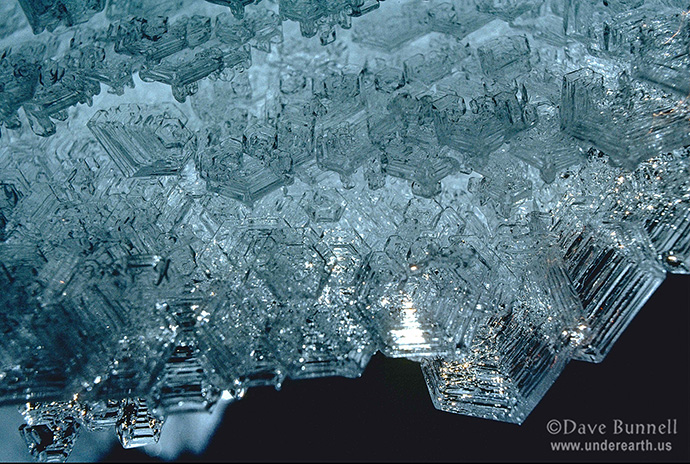
Hexagonal ice crystals on the ceiling in a limestone cave. These form from water
vapor.

Unusual among ice formations are these ice flowers.

Here are some ice splattermites, analogous to their calcite cousins.
More ice images: select for a larger image.
![]()
| Back to: | |
 |
Created: December 14, 2006 |

